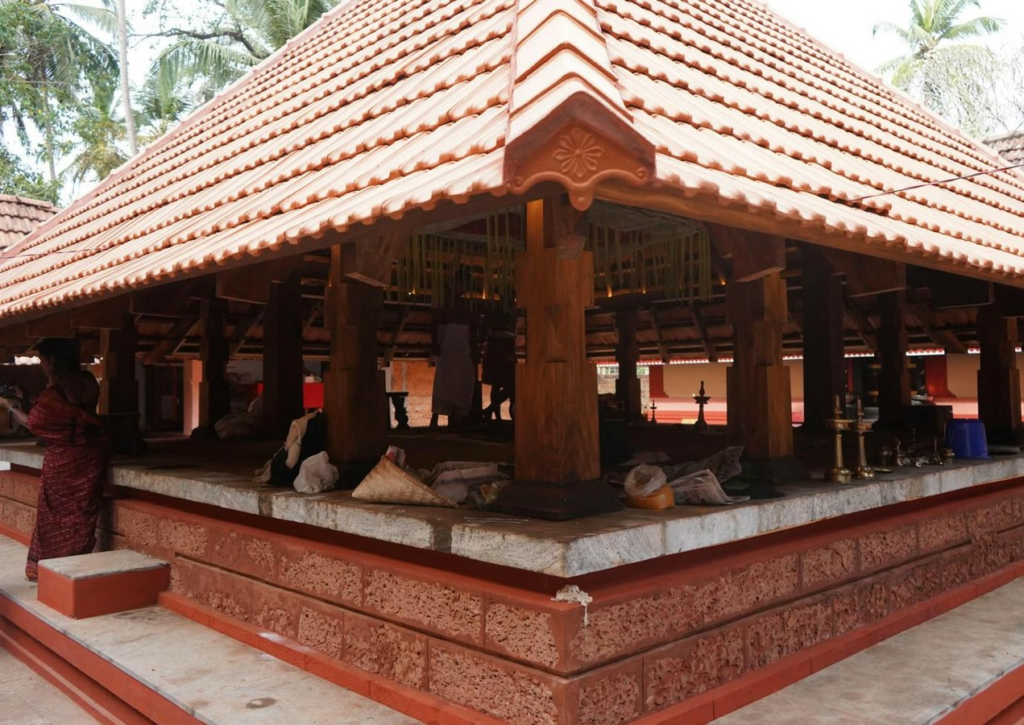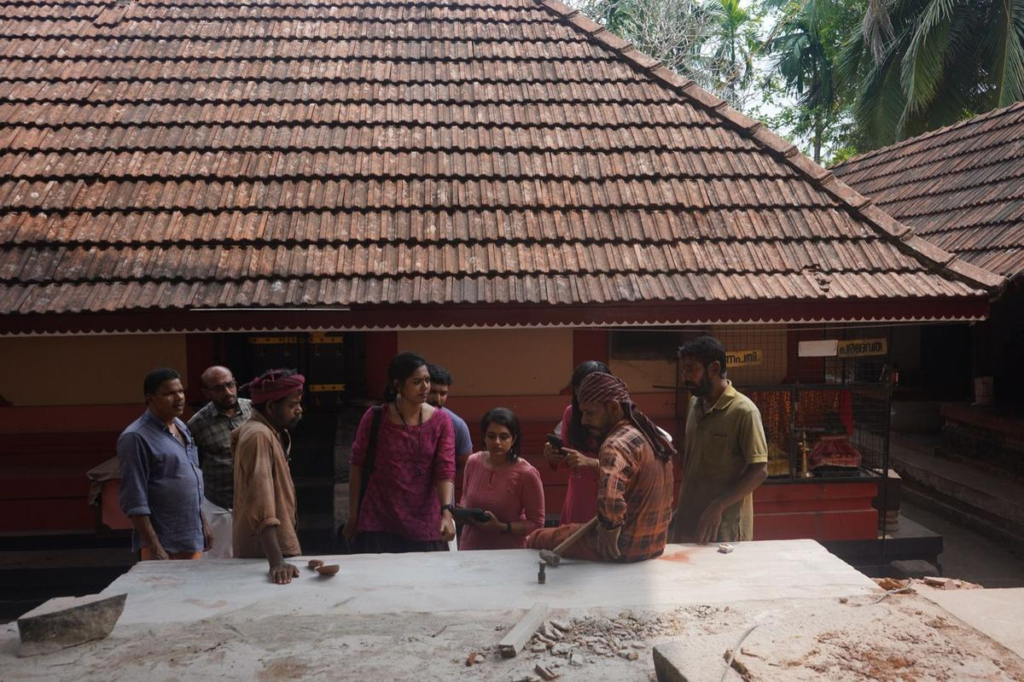Posted On May 18 2024
Total Post Views :- 1770
We are delighted to have the co-founders of EZHA Heritage to shed light on reviving the past traditional techniques and community collaboration with us today. EZHA Heritage is an acclaimed architectural design and heritage conservation consultancy based in Kerala, founded by three conservation architects and friends from SPA Delhi: Architect Ritu Thomas, Architect Swati Subramanian, and Architect Savita Rajan. Their work seamlessly integrates heritage, nature, and community, reflecting a profound commitment to heritage conservation, interpretation, and adaptive reuse.
Notable Projects and Achievements by EZHA heritage
Restoration of Karnikara Mandapam, Calicut
One of their most notable projects is the restoration of the Karara Mandapam at the Kizhakkumbhagavathy Temple in Calicut, which won the UNESCO Asia Pacific Award. This project showcases their expertise in handling heritage structures with care and precision.
Collaborations with the Archaeological Survey of India
EA Heritage has also collaborated with the Archaeological Survey of India on significant projects, including the Gap Analysis of the Hampi World Heritage Site for UNESCO’s G20 Summit. Their work in this field has received wide acclaim, further establishing their reputation as leaders in heritage conservation.
The Restoration of Kikar Mandapam
Historical and Cultural Significance
The Kikar Mandapam is part of the Kizhakkumbhagavathy Temple located in a quaint village in Calicut. The temple holds significant cultural and religious importance, with its resident deity, Bhagavathy, believed to protect the cultural and sacred landscape, including surrounding hills, streams, and inhabitants.
The temple’s layout features a rectilinear structure with a Chuttambalam (outer structure) and a central Sreekovil (sanctum sanctorum) housing the deity. The Kikar Mandapam, or the worship hall, is located in front of the sanctum sanctorum.

Unique Features
Unlike other South Indian temples, the deity in this temple faces west instead of east, adding to its uniqueness. The term “Kikar” refers to the 16 pillars of the mandapam, symbolizing the 16 syllables of a mantra and the 16-petal lotus, reflecting the temple’s rich symbolic heritage.
Conservation Approach
Initial Condition
When EA Heritage undertook the restoration in January 2023, they discovered severe deterioration. A long period of disuse led to termite infestation, water seepage, and structural damage in the mandapam. Workers hollowed out the timber pillars and put up temporary scaffolding to prevent collapse.
Documentation and Planning
Detailed documentation of the mandapam was crucial. This included condition assessment, photographing deteriorated areas, and creating detailed plans and sections. Given the tight timeline of two and a half months to complete the project before the annual temple festival, meticulous planning was essential.

Conservation Philosophy
Their conservation philosophy is rooted in ancient Indian treatises like Vastu Shastra and Thachu Shastra, focusing on harmony with natural forces and the use of locally available materials. The project followed the principles of Jirodhar (preservation from decay) and Punarudhar (regeneration or restoration), combining preservation of the existing stone and laterite fabric with the restoration or replacement of deteriorated timber.
Restoration Process
The restoration involved several meticulous steps:
- Dismantling Work: Carefully removing deteriorated timber and cement plastering.
- Craftsmanship: Traditional carpenters used precise measurements to carve timber shafts and capitals.
- Material Selection: Choosing Benga wood, known for its medicinal properties and cost-effectiveness, to replace the termite-infested teakwood.
- Assembling: Laying granite stones, cleaning laterite stones, and assembling timber pillars and beams.
Challenges
The major challenges included working within a tight budget and timeline. The project was partially crowd-funded, emphasizing the community’s involvement and support. Despite these constraints, EA Heritage successfully completed the restoration in time for the temple festival.
The first critical step in our conservation project was to remove the incompatible materials and reveal the structure, exposing the underlying masonry. Our conservation philosophy focuses on employing local techniques and methods to restore the structure. By involving local artisans, we aim to revive the structure while preserving traditional craftsmanship.
Utilizing Medicinal Wood Treatments
We employed an innovative approach to treat and protect the wood. This involved consulting with a Vaidya, an expert in traditional medicine, to prepare an organic solution. This solution comprised around 32 medicinal herbs and five base oils, one of which is linseed oil. The preparation process was akin to making Ayurvedic medicines, highlighting the intensity and care involved.
Advantages of Traditional Methods
Unlike modern wood polishes filled with chemicals that emit strong odors, our organic solution provided a pleasant aroma. This was not only appreciated by the workers but also by the visitors to the temple. The aromatic environment created a more enjoyable experience for everyone involved.
Restoring the Mandapa Flooring
The mandapa’s flooring, where rituals are performed, was traditionally plastered in mud and coated with cow dung, bordered by granite stones. Our challenge was to level out the granite border and restore the mud flooring and cow dung coating. This meticulous process ensured the flooring was both authentic and functional.
A Celebratory Conclusion
Witnessing the culmination of our efforts on the festival day was truly rewarding. The mandapa was beautifully lit, and the performances on the restored platform brought the space to life. The success of this project underscored the importance of blending traditional practices with modern conservation techniques.
The success of this project was a collaborative effort. By incorporating local communities and utilizing sustainable materials, we were able to merge traditional construction methods and beliefs with contemporary conservation practices. The positive feedback and the sense of accomplishment we felt reaffirmed the value of our approach. Thank you for your support and appreciation.
